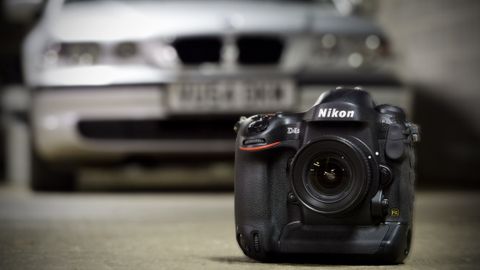TechRadar Verdict
The D4S is a great workhorse for professional photographers. It's built to last and gets great shots in conditions that would be too taxing for other cameras.
Pros
- +
11fps shooting with AF
- +
Fast AF
- +
Massive ISO range
Cons
- -
Big and heavy
- -
No Wi-Fi or GPS built-in
- -
AF points clustered in centre
Why you can trust TechRadar
Since its launch in January 2012, the Nikon D4 has been the camera of choice for many professional photographers who need the ultimate in speed, low-light shooting capability and AF performance. It's also built to survive heavy use in the type of conditions that news reporters find themselves in on a regular basis.
The D4S makes a relatively subtle upgrade to the D4, keeping with the same pixel count, but making a few refinements that can be largely attributed to the move to the newer Expeed 4 processing engine.
Features
Nikon has been pretty tight-lipped about the changes made to the D4S's sensor, but we're told that it's new and that it has an effective pixel count of 16.23million, while the D4's count is 16.25 million. Not a huge change then, and the pixel pitch remains the same at 7.3 µm.
According to Nikon, the new sensor and Expeed 4 engine combination results in an approximately 1.5EV improvement in noise performance and this has given the company the confidence to expand the D4S's native sensitivity setting by 1EV on the D4 to ISO 100-25,600. In addition, the expanded range is ISO 50-409,600.
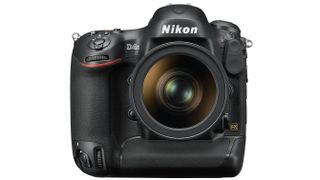
Thanks to the Expeed 4 processor, the D4S has a maximum continuous shooting rate of 11fps. The D4 can also manage this speed, but not the accompanied ability to focus and meter between shots.
The buffer capacity has also been increased, enabling as many as 200 JPEG Fine quality files, 176 compressed 12-bit raw files or 60 uncompressed 14-bit raw files to be captured in a single burst. As with the D4, these images may be written to either CompactFlash or XQD media as the D4S has two card ports.

The D4S has new mirror and sensor mechanisms, with the former having better dampening than the D4, to give a more stable image in the viewfinder. The blackout time between frames is also shorter and there's a shutter lag of just 42ms.
These facts (and the new processing engine) probably explain why the camera is able to focus when shooting at 11fps.
Nikon has improved the autofocus algorithms for the D4S and it uses an Advanced version of the Multi-CAM 3500AF module found in the D4. This adds Group-area AF mode to help when shooting subjects that are comparatively small and close to a high-contrast or distracting background.
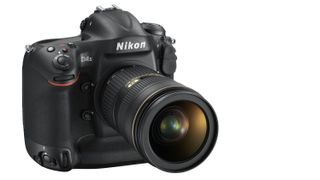
In this mode, the user selects an AF point and the camera uses it and the ones immediately above, below, left and right to keep the subject sharp.
As with the D4 and other Nikon SLRs, the D4S also has 9-,21- and 51-point dynamic-area AF and 3D-tracking modes. In the latter mode, the camera uses colour information from the subject and background to track the subject around the frame.
It's a good option when there is a clear colour contrast between the subject and its surroundings. It's not a good choice for team sports, however, when there may be many objects of the same colour milling around the scene.
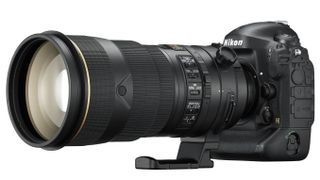
It's also possible to specify the speed at which the camera responds to changes in the subject's distance. This is especially useful when objects are likely to come between the camera and the subject
Like the D4, the D4S has a 91,000-pixel RGB sensor that informs the metering and white balance systems. In addition to 3D Color Matrix metering III, there are three centre-weighted metering options and a Spot metering mode. It's also now possible to select to use full-time face recognition with Matrix metering when shooting stills, movies, and time-lapse photography.
Nikon tells us that the D4S processes images differently from the D4 as out of focus areas are treated differently from sharp subjects to enhance shallow depth of field.
Another, rather strange, addition to the D4S's feature list is the ability to record small (4Mp), uncompressed 12-bit raw files.
It's hard to imagine this being used very often, but perhaps those who shoot exclusively for the internet will welcome it. It's worth noting at this point that dropping to Small Raw files reduces the burst depth when shooting continuously to 36, presumably because of the interpolation that's required.
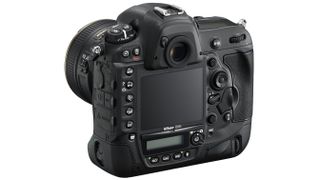
Naturally, the D4S is capable of recording Full HD video and this can now be shot at 50p/60p. Photographers can also set specific sensitivity settings, rather than ranges in Manual exposure modes, and the sensitivity can be set to up to ISO 409,600.
As with the D4, the D4S offers three sensor crop formats, FX, DX, and native crop, the latter of which gives a focal length magnification of approximately 2.7x. There's also a clean, uncompressed full-resolution HDMI output to external devices.
Some people found that the D4's green had a slightly green colour cast. Nikon has given the D4S a monitor colour balance option that allows the LCD's colour to be adjusted across two axes, blue-amber and green-magenta, with a total of 11 points along each axis.

While there are GPS and Wi-Fi enabled devices available for the D4S, as well as a Gigabit 100/1000TX Ethernet port for fast image transfer, it seems rather odd that Wi-Fi connectivity and GPS technology aren't built-in.
